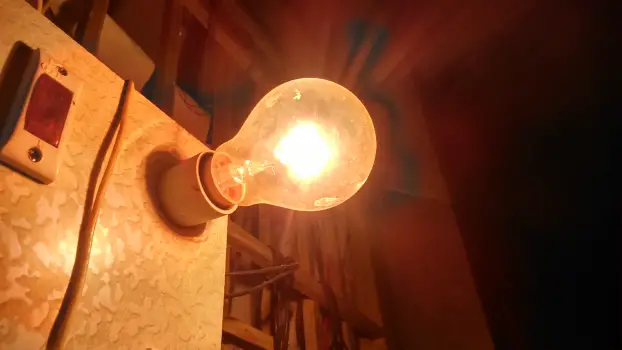Light, associated with electromagnetic radiation within the visible spectrum, emanates from various sources like the Sun, light bulbs, and stars. This luminosity is a result of electrons jumping between different orbits – light is emitted when an electron descends from a higher orbit to a lower one, and it is absorbed when the electron ascends to a higher orbit. These transitions give rise to particles known as photons, which exhibit both wave-like and particle-like properties. Propagating in waves at the speed of light, photons interact with matter by being absorbed, transmitted, or reflected, enabling us to perceive colors and shapes in our surroundings.
Examples
Sunlight

The Sun, our primary source of natural light, radiates an immense amount of light onto the planet Earth. This radiant energy sustains life, drives weather patterns, and enables photosynthesis, forming the basis of various ecological processes on our planet.
Light bulb

A light bulb, a common artificial light source, emits light when an electric current passes through a tungsten filament. The filament, heated by the current, reaches a temperature that causes it to glow, producing the familiar and practical illumination we use in our daily lives.
Stove

When a stove is ignited, it not only produces heat but also emits visible light, giving rise to a flame. This occurs through the combustion of gas or other fuel sources, releasing energy in the form of both heat and light. The emitted light adds to the visual appeal of the flame, contributing to its brightness and serving a practical function for cooking or heating purposes.
Star

Stars are massive celestial bodies that undergo nuclear fusion in their cores, releasing vast amounts of energy. This energy manifests as light, and stars emit this light in various wavelengths, making them visible in the night sky. The light from stars allows us to observe and appreciate the vastness of the universe.
Glowworm

Glowworms, or bioluminescent organisms, have the remarkable ability to produce light through a chemical reaction. Specialized cells in their bodies contain light-emitting molecules, and when these molecules react with oxygen, they emit light. This bioluminescence serves various purposes, including attracting mates or luring prey, and it creates a distinctive and enchanting glowing effect.
Flashlight

A flashlight is a portable light source powered by batteries. When the flashlight is switched on, an electric current flows through a bulb or LED (light-emitting diode), causing it to emit light. This emitted light provides immediate illumination in the surrounding area, allowing individuals to navigate in the dark or spotlight specific objects. Flashlights are practical tools for a wide range of applications, from outdoor activities to emergencies.
Candle

When a candle burns, the heat from the flame melts the candle wax, and the liquid wax is drawn up the wick. As the liquid wax reaches the flame, it vaporizes and combusts, creating a luminous flame. The flame emits light as a result of incandescence – the process of generating light through high-temperature heat. The flickering effect is caused by the constant interplay of air currents and combustion processes.
Computer

In modern computer screens, particularly those using LCD (liquid crystal display) or LED (light-emitting diode) technology, the display emits light when activated. A backlight behind the screen, in the case of LCD displays, or individual LEDs in the case of some LED displays, produces light. This emitted light passes through the liquid crystal pixels or individual LEDs, allowing the screen to display images and colors when combined with other technologies such as color filters or phosphors.
Fire

Fire results from the combustion of a fuel source, and during this process, light is emitted in various forms. The visible flames are the result of incandescence, where hot gases and particles emit light. As certain materials burn, they release glowing embers – pieces of burning material that continue to emit light after detaching from the main fire. The combination of flames and embers contributes to the overall illumination produced by a burning fire.
Laser

Lasers, which stands for “light amplification by stimulated emission of radiation,” generate light through a process known as optical amplification. Within a laser device, atoms or molecules are stimulated to emit photons (particles of light) through a process called stimulated emission. These emitted photons are then amplified as they pass through a gain medium, a material that enhances the intensity of the light.
Related
More topics
- Radio wave
- Microwave
- Infrared
- Light
- Ultraviolet
- X-ray
- Gamma ray
External links
- https://www.solarschools.net/knowledge-bank/energy/types/light
- https://whatsinsight.org/light-energy/
- https://study.com/academy/lesson/light-energy-examples-lesson-for-kids.html
- https://lambdageeks.com/light-energy-examples/
Deep
Learnool.com was founded by Deep Rana, who is a mechanical engineer by profession and a blogger by passion. He has a good conceptual knowledge on different educational topics and he provides the same on this website. He loves to learn something new everyday and believes that the best utilization of free time is developing a new skill.
